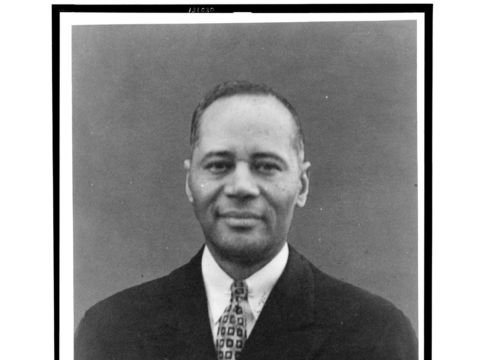When Barack Obama was elected president, observers at the time noted that he could serve as an inspiration for millions of black students. In a contested study that followed, a group of researchers claimed the so-called “Obama effect” had raised the achievement of African-American students so much that it erased the gap between black and white test takers.
Whether or not the “Obama effect” has significantly moved student test scores, there is little doubt that seeing a black man elected to the highest political office in the nation has encouraged black students to set their sights higher. We know that when a child is attempting to navigate the world, their aspirations are conditional on the set of options they encounter and what they believe is attainable. In many ways, the adult role models that students are exposed to shape the people they will become. This is partially why decades of social programs meant to break the cycle of poverty have fallen short. They have not effectively changed the cultural environments that reinforce class stratification. As Robert Putnam chronicles in his latest book, wealth increasingly produces more wealth, and poverty produces more poverty. And poverty, access to quality education, and race remain uncomfortably correlated.
In a similar vein, some have argued that minority teachers can serve as positive role models and mentors for minority students, capable of building a cultural bridge between home and school. While most students will spend very little time considering Obama’s life story, a typical student spends nearly 1,000 hours a year with their teachers.
Minority teachers, however, are noticeably underrepresented in American schools. Though minority students now make up a majority of public school enrollment, nearly 82% of public school teachers are white. As a result, Black and Hispanic students are two to three times more common than Black and Hispanic teachers. Moreover, this “diversity-gap” between students and teachers tends to be wider in areas where percentages of minority students are higher. In California, for example, only 29 percent of teachers identify as ethnic minorities, while 73 percent of students are from a minority group.
Does the diversity gap affect student outcomes? A growing body of research suggests that it does. Using achievement data from the Tennessee Star Project, Thomas Dee finds that black students do slightly better with black teachers. Other studies have documented that having a demographically similar teacher positively influences teachers’ subjective evaluations of student performance and behavior.
In a recently published study in Economics of Education Review, we follow the trajectories of 2.9 million public school students in Florida over a seven-year time period and compare their standardized test scores in years when they had a teacher of the same ethnicity to school years when they did not.
By using student-level data for almost three million individuals, we can account for lots of student characteristics that might influence test scores—things like poverty status, English language proficiency, gender, average teacher quality, and prior year test scores. And, because we compare the students to themselves from year to year, we can also account for important but hard-to-measure factors like student ability, motivation, and personality characteristics.
We find that Black, white, and Asian students benefit from being assigned to a teacher that looks like them. Elementary-aged Black students and lower-performing students seem to particularly benefit from having a demographically-similar teacher.
Given these findings, it is certainly possible that the “diversity gap” between students and teachers is a contributing factor to the persistent achievement gap between minority and white students. And though the effects we measure are small, it is likely that these effects could compound over multiple years of experiencing a demographically-similar teacher. Moreover, it is likely that student achievement, though easily measured, is not where the bulk of the effects would be largest. Self-efficacy, educational aspirations, self-esteem, and attainment make much more sense as potential outcomes that would change as a result of demographically-similar role models. Small gains in student achievement may only be the tip of the iceberg.
As the diversity of students in our schools continues to grow, the arguments for policies meant to improve representation among teachers have more and more evidence to support them. You can read more about our work over at Real Clear Education.
—Brian Kisida and Anna Egalite
Brian Kisida (@briankisida) is a Senior Research Associate in the Department of Education Reform at the University of Arkansas
Anna Egalite (@annaegalite) is a Postdoctoral Fellow in the Program on Education Policy and Governance in the John F. Kennedy School of Government at Harvard University.



